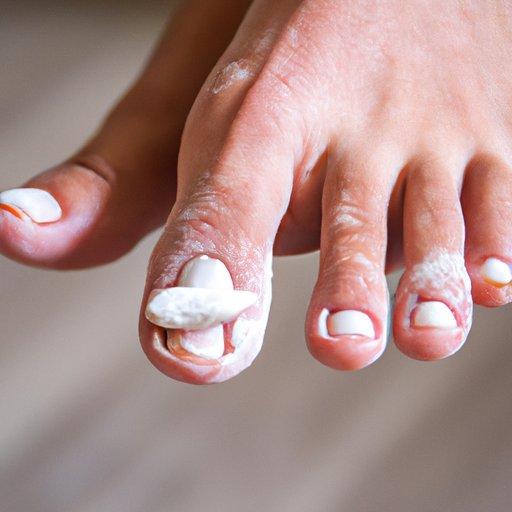I. Introduction
Toenail fungus is a common issue that affects millions of people worldwide. It is caused by a fungal infection that enters through the nail bed and can be unsightly and uncomfortable. If left untreated, toenail fungus can also worsen over time. However, there are various treatments and prevention strategies that you can implement to get clear, healthy nails.
II. Topical Treatments
Over-the-counter creams, ointments, and nail paints containing antifungal agents can be effective in treating mild cases of toenail fungus. Some popular options include Lamisil, Lotrimin, and Fungi-Nail. Make sure to read the label to check the active ingredient and follow the usage instructions strictly. In general, application should be done at least once a day on clean, dry feet and nails. It might take several months to see visible results, and consistency is key in achieving full recovery.
III. Home Remedies
Natural remedies have also been shown to be effective in treating toenail fungus. Tea tree oil, which has antifungal and antiseptic properties, can be mixed with carrier oil such as coconut oil and applied to the affected area. Apple cider vinegar soak can be done by mixing equal parts of water and vinegar and soaking your feet for 30 minutes daily. Other remedies such as garlic and oregano oil have also been used with promising results. Be careful to use these remedies as directed and to stop if you notice any irritation or allergic reactions.
IV. Prescription Medications
If over-the-counter treatments don’t work, your doctor may prescribe topical or oral antifungal medications. Some topical medications like Jublia or Kerydin are applied to the nail and surrounding skin. Oral medications such as terbinafine or itraconazole are taken for several weeks and may be more effective in severe cases. However, prescription medications can also have side effects such as liver damage or rashes. Be sure to talk to your doctor about the risks and benefits of each medication and follow their instructions exactly.
V. Prevention Strategies
Preventing toenail fungus is easier than treating it, and there are some simple habits you can adopt to lower your risk of contracting it. First, make sure to practice good foot hygiene by washing your feet daily and drying them thoroughly. Keep your toenails trimmed and avoid sharing nail clippers or files. Wear shoes, especially in public places like gyms and pools, and choose breathable footwear that doesn’t trap moisture. Lastly, minimize the use of nail polish and artificial nails as they can block airflow and create a suitable environment for fungi to grow.
VI. Lifestyle Changes
While it may not directly treat toenail fungus, improving your overall health can boost your immune system and make it easier to combat the infection. Eating a balanced diet, staying hydrated, and getting enough sleep can help to prevent and treat fungal infections. High-stress levels may also increase your risk of contracting toenail fungus, so finding healthy ways to cope with stress is also important. Exercise regularly and avoid smoking as it can reduce blood flow and lower immunity, making it easier for fungus to grow.
VII. Professional Treatment Options
If home remedies and medications are ineffective, your doctor may recommend professional treatment options such as laser therapy or surgical removal of the nail. Laser therapy uses targeted beams of light to kill the fungi, while surgical toenail removal entails removing the entire nail or the infected part only to prevent further spread. Both options are usually reserved for severe, chronic cases and can be costly. Talk to your doctor to find out if you are a good candidate for these treatments.
VIII. Conclusion
Toenail fungus is a common condition that can be treated with various methods. Prevention strategies, home remedies, topical treatments, and prescription medications are all effective in combating toenail fungus. By taking care of your feet health and making small lifestyle changes, you can reduce your risk of contracting toenail fungus. However, if the condition persists or worsens, be sure to consult with your doctor to get professional advice and treatment. Preserve your feet health by incorporating these practices into your routine.
